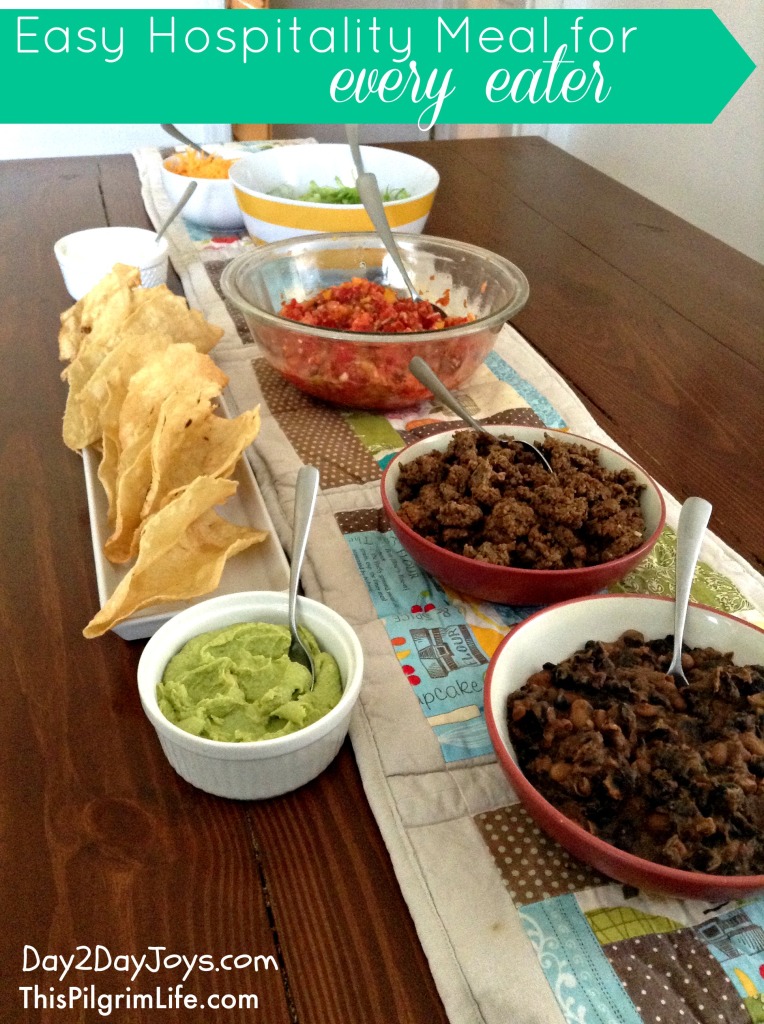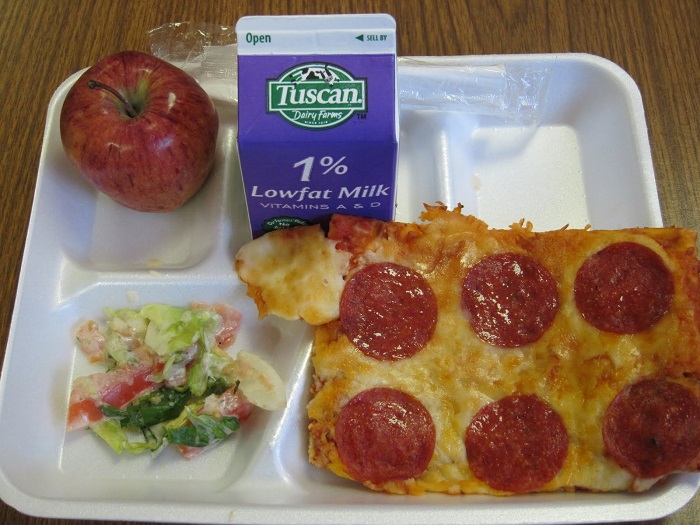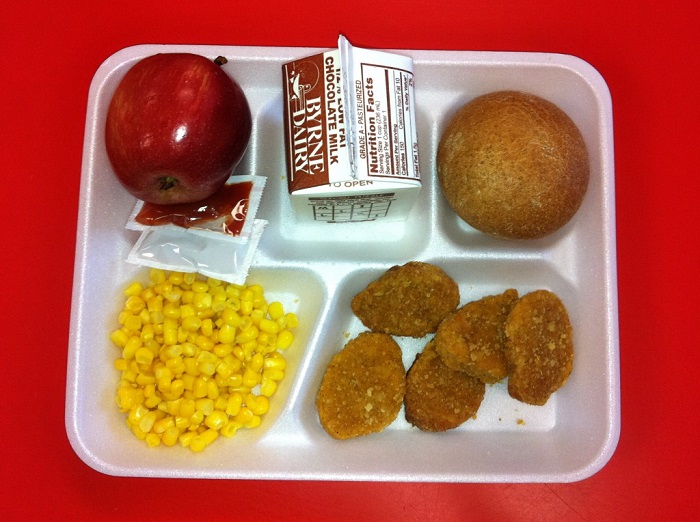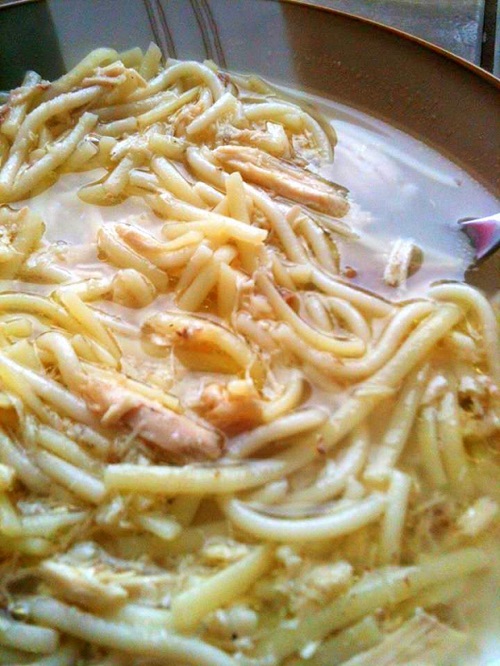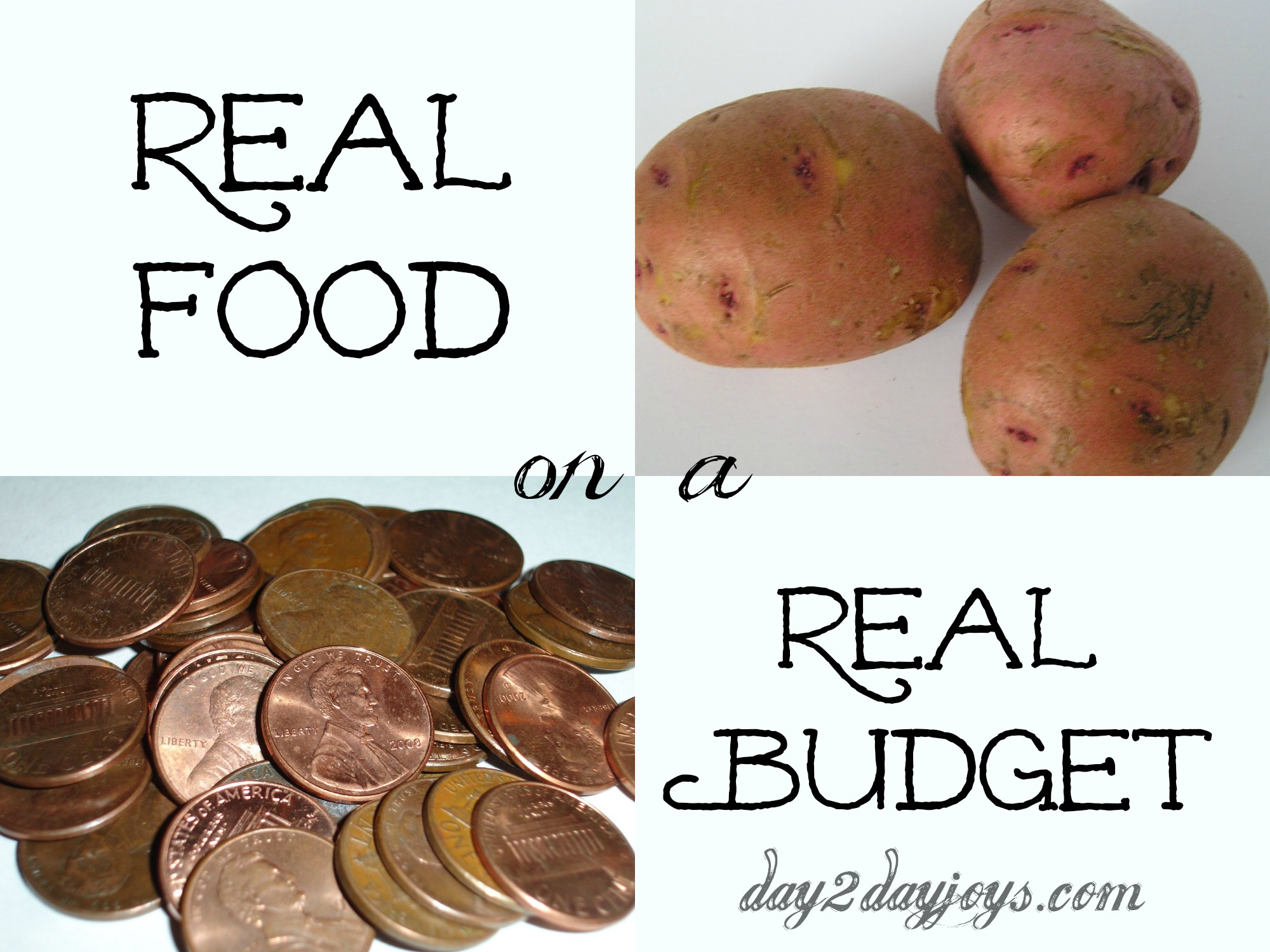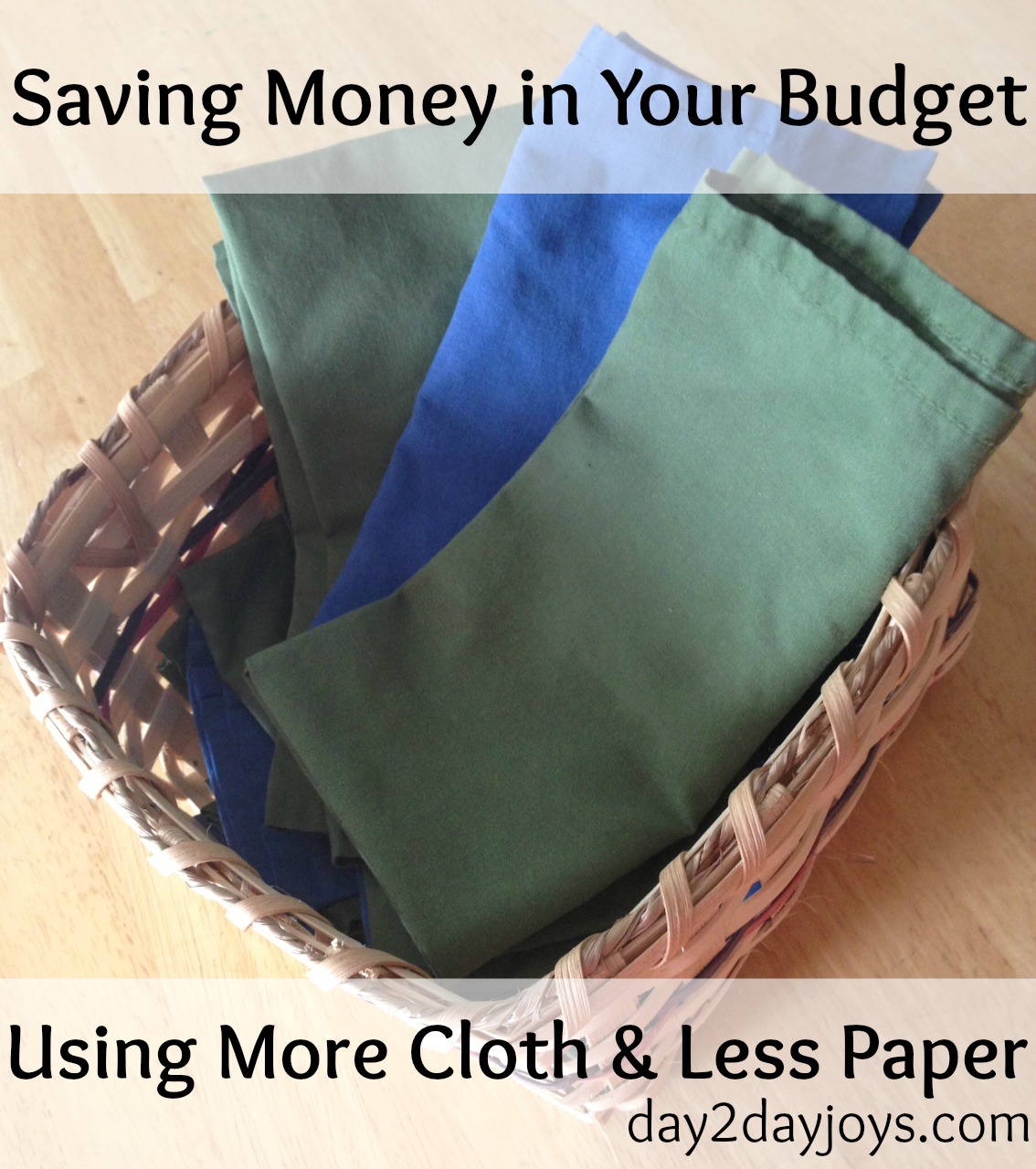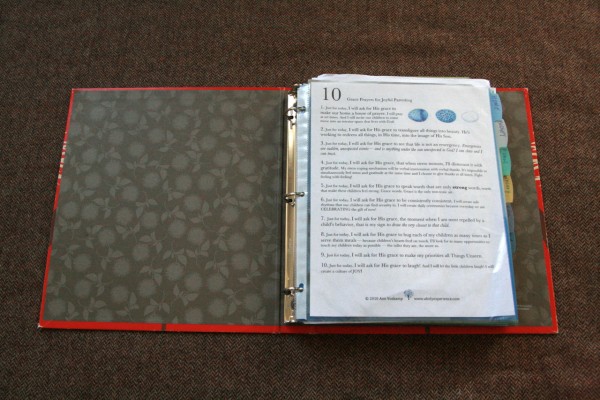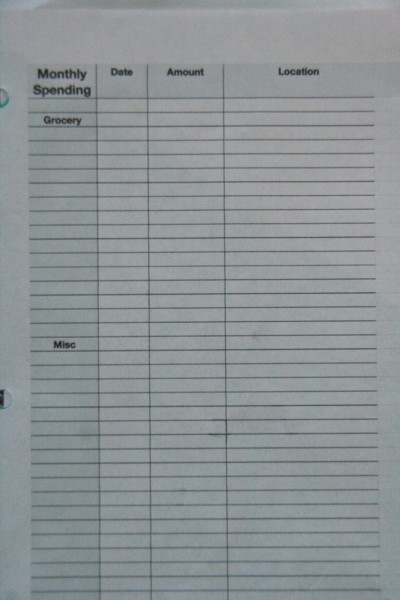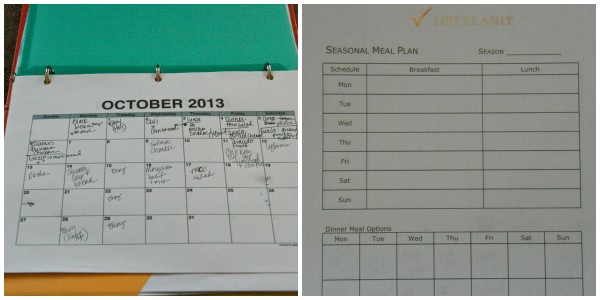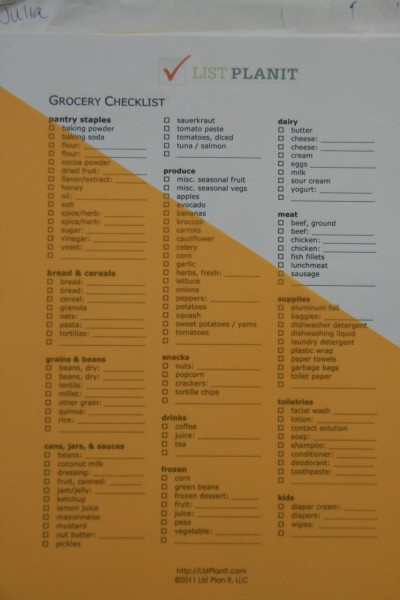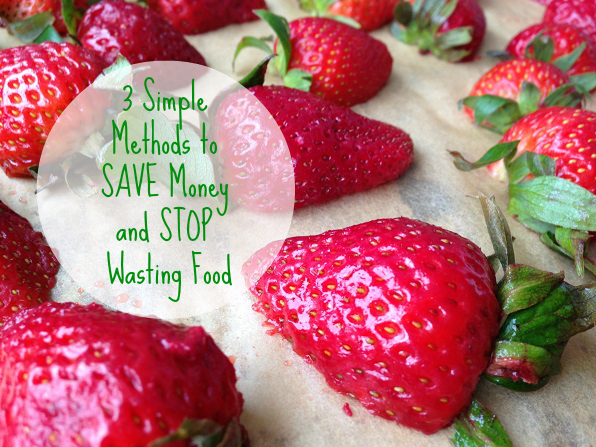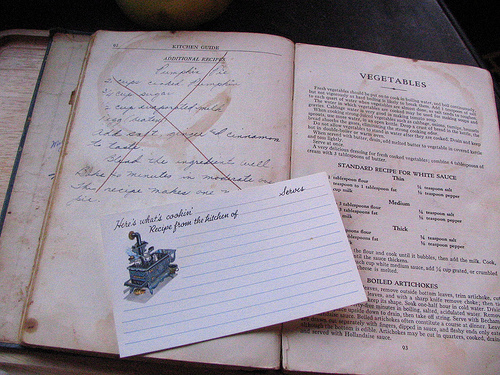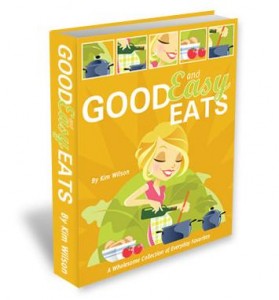The post Understanding GMO’s and What They Mean To Us appeared first on Day2Day Joys.
]]>
Written by Kari @ Live on Purpose, Contributing Writer
Wouldn’t it be wonderful if eating healthy didn’t have to be so complicated? I love talking to my grandmother, who is 83, and just listening to how different things were so many years ago. Do you know there was a day and time when people just ate. Yep – it was that simple. They grew gardens, they raised cattle, pigs, goats and sheep. They knew how to prolong their winter supply and utilize everything they had so it didn’t go to waste. Many towns had small, family owned markets to get stuff like flour, sugar and spices. There may have been more labor involved in their eating, but they never had to wonder if the food they were eating was “real” or “fake”, if it had chemicals sprayed all over it or if they animal had been treated humanely. They just ate.
Not so much today. Unfortunately, most people spend hours upon hours every week just trying to see if the food they are buying and eating is healthy or toxic. Think of all the label reading, menu scouring, waiter questioning and google searches that go into your weekly eating habits.
One of the most misunderstood and sometimes unheard of issues with our food supply today is GMO’s – genetically modified organisms. Yes, I teach classes, do consultations and host small group challenges – and so many people still have never even heard of the term, GMO.
When I first heard about this issue years ago, I was fascinated and have researched it over the past 10 years with somewhat of a vengeance. So much so, that I do everything I can to avoid eating foods with GMO’s as mush as I can, although I found that when we travel it’s not super easy.
What exactly are GENETICALLY MODIFIED ORGANISMS Or GENETICALLY ENGINEERED INGREDIENTS?
Without getting into controversy here, I want to mention that there is much debate on the ethical boundaries of GMO’s and the fact that many countries ban any products with GMO’s and it’s illegal to grow anything with GMO’s – yet The United States allows them, grows them and supports them and their health benefits. In fact, many third party studies have shown such damaging effects of GMO, so we should be more cautious about these considering they never had studies done with genetically modified ingredients in the past. It’s also good to point out that the FDA does not require labeling and doesn’t feel it’s necessary as long as the companies declare it to be
safe.
Basically, food is altered in an unnatural way that is damaging our soil, hurting family farms and is disrupting the healthy functions of the physical body, in humans and animals. When you understand that this is an area that is understudied and short term and long term effects are mostly unknown still, we need to have better diligence when it comes to consuming foods containing these.
Personally I think the biggest concern is that the government and agencies do not feel we have the right to know what foods on the market contain GMO’s. This is disturbing, so it’s a good idea to do research on these foods, which companies use them and don’t and how to know what to look for when you are grocery shopping.
Below you will find a good list of companies that are GMO-free! Although there is no complete list that I have found – these are good resources and helpful for those who don’t have the time to do the research themselves. Get acquainted with the names. Print off the list and carry it with you when you go shopping. Look for stamps on foods that say “NON-GMO VERIFIED” or “CERTIFIED ORGANIC USDA”. These simple steps will help you narrow down your selections so you know which foods are safe to eat. They may not be as safe as going to your backyard, but for those who have to buy their food at the store – these two things will make a huge difference in your food choices.
Choose dairy that states it’s from grass fed cows. Ask if your meat is raised and finished on grass – you don’t want meat from a grain-fed cow, even if it’s organic meat. When buying chicken and eggs – you want pasture-raised. This will be the healthiest and most beneficial to your body.
Shopping doesn’t have to be hard, but unless you do a little research and have some resources you can turn to – it may be a part of your weekly routine that you dread. Get informed, be proactive and shop easy!
- GreenPeace PDF Guide to NON-GMO companies – click here
- GMO-Free Foods from Nourished Kitchen – click here
- NON-GMO Companies by Healthy Family – click here
- NON-GMO Shopping Guides and Tips Downloadable – click here
A couple quotes to think on:
“As far as genetic engineering for food, that is the great experiment that has failed. They literally have the entire world market against them. All those dreams… the blind will see, the lame will walk… has turned out to be science fiction. They are basically chemical companies selling more chemicals. They’ve been able to spread these herbicide-promoting plants around because it is more convenient for farmers who can just mass-spray their crops. But they’ve given absolutely nothing to the consumer while causing more chemical pollution and contamination.” – Lawyer, Andrew Kimbrell, executive director of the Center for Food Safety (USA)
“Any scientist who tells you they know that GMOs are safe and not to worry about it, is either ignorant of the history of science or is deliberately lying. Nobody knows what the long-term effect will be.” – Geneticist, David Suzuki, giving the 2008 Commonwealth Lecture in London
How will you be proactive when it comes to avoiding genetically modified foods?
The post Understanding GMO’s and What They Mean To Us appeared first on Day2Day Joys.
]]>The post Easy Hospitality Meal for Every Eater appeared first on Day2Day Joys.
]]>Inviting people into our homes to share meals together seems to be a habit that happens less and less these days. And I get it. It’s hard. We’re busy. They’re busy.
It’s true. Practicing hospitality can be a challenge and especially daunting in today’s world of Pinterest-perfect idealism (just let it go!). It can also be confusing to plan a meal while taking into consideration potential food allergies and simple food preferences (picky eaters, anyone??).
But I whole-heartedly think that the benefits far outweigh the challenges. There’s just something about sharing a meal together in the comfort of someone’s home. It’s a special sort of vulnerability to see each other’s messes, the pictures on our walls, and special places we call home. The time invested in conversations across the table or on the couch with a hot cup of coffee can do more for community building in a few hours than dozens of hours of small talk at work or church.
One of my favorite meals to plan for friends is setting up a taco bar. If the idea of preparing food is holding you back from hospitality…If cooking just isn’t your thing…If it just seems like there’s never enough time to get ready…then why give a taco bar a try?
It’s easy to prepare beforehand and requires little prep once guests arrive. And it’s a perfect meal to accommodate a variety of food allergies or preferences.
Gluten-free? No problem. Vegetarian? Got you covered. Dairy-free? Yep. Your kid only likes cheese? Sure thing.
It’s a no-fuss meal that everyone is familiar with. You can buy everything pre-made or spend a little time in the afternoon putting together a few toppings.
Here’s what I like to include in our taco bar:
- Taco shells
- Ground beef (seasoned with taco seasoning)
- Black beans and/or pinto beans (seasoned with taco seasoning)
- Shredded cheddar cheese
- Salsa
- Guacamole (I love Wholly Guacamole from Costco- so convenient and delicious!)
- Sour cream or plain Greek yogurt
- Shredded romaine lettuce
Embrace the vulnerability of bringing people into your home, prioritize people over false notions of what hospitality has to look like, and take joy in the sweet gifts of friendship and community! It’s worth it.
Can you think of a family or friend to show hospitality to? Do you have a meal is your “go-to” for inviting friends over?
The post Easy Hospitality Meal for Every Eater appeared first on Day2Day Joys.
]]>The post Chicken Tortilla Soup With A Kick appeared first on Day2Day Joys.
]]>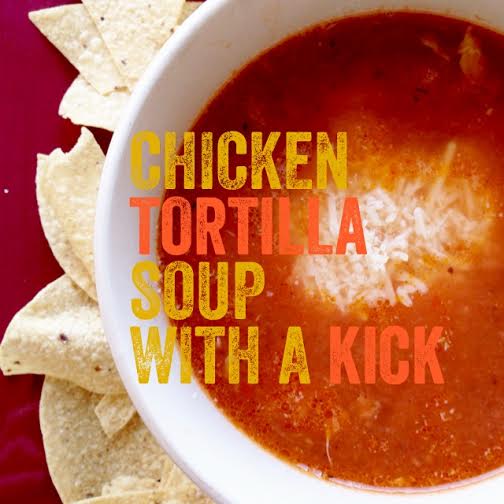
Written by Kari @ Living Strong, Health & Wellness, Contributing Writer
It is October and it’s officially cooling down enough to try this great recipe, which is perfect for any chilly weather you might experience over these next few months!
This belly warming soup is simple, quick and so delicious! All you need is a blender and a stock pot (or slow-cooker) and you’re set to make the most amazing tortilla soup you have ever had! You can keep this a mild meal or add some extra peppers to give it that kick that keeps you coming back for more!
This is not only a favorite in our house, but in houses all over these wonderful states! I’ve shared this recipe over the years and then it was included in my cookbook – and it gets rave reviews every time! I have never found a restaurant that has a soup that compares to this! You definitely need to try it! I’ve taken the text from the cookbook to include allergen-free information as well as more tips to make it even healthier!
Chicken Tortilla Soup With A Kick:
What you need:
- 1 whole fryer chicken
- 8 cups chicken broth (can make while cooking the chicken)
- 16 ounces of diced tomatoes
- 1 medium yellow or white onion, cut in half
- 2 cloves garlic – ½ cup fresh cilantro
- 1 teaspoon raw honey
- 3 chipotle peppers soaked in adobe sauce
- optional, 2 avocados
- optional, ½ cup full-fat yogurt, plain
- optional, tortilla chips
- optional, shredded cheese
What you do:
- To prepare the stock and the chicken, plan to start preparing the meal in the morning.
- Cook the whole fryer by placing in a slow cooker, covering completely with water, adding seasonings and spices (salt, garlic powder, parsley, pepper) and cook on low for 8 hours.
- After 8 hours, remove the whole fryer from the slow-cooker using slotted spoons. Place in a bowl and allow to cool for about 5-10 minutes. Begin removing the chicken from the bones and place on a plate. Pull the meat with two forks. This is your shredded chicken.
- Strain out the liquid in the slow-cooker into a bowl (if you’ll cook the soup in the slow-cooker) or stock pot (if cooking soup on the stove) to remove any large pieces of meat or bone that fell off the chicken (it gets super tender). If you used a bowl, once it’s strained, replace liquid back in slow-cooker.
- Separate about 1 ½ to 2 pounds of shredded chicken and add to the broth.
- In a blender, puree the tomatoes, onion, garlic, cilantro and honey until smooth.
- Pour this mixture in with the broth and chicken. Stir to combine.
- Add the chipotle peppers if you are wanting that kick to your soup. If not, omit.
- Continue cooking in the slow-cooker for about an hour and a half or on the stove-top over medium for 45 minutes.
- To serve, prepare the bowls by putting some avocado and yogurt in the bottom of the bowl. Crunch tortilla chips and place on top. Next, ladle the soup over the prepared bowls and top with shredded cheese. Wow, get ready!
Yield: Approximately 14 cups
I’m special because (if using “optional” ingredients, the allergy-free info below may change):
dairy-free, egg-free, gluten-free, grain-free, soy-free
Substitutions:
*Full-fat yogurt: full-fat sour cream
Health Made Easy:
if you’re short on time, you can purchase your broth, but make sure it’s organic and low-sodium | homemade broth will supply your body with so many nutrients that you’ll never get out of store bought brands, so choose homemade if possible | don’t have time to cook a whole fryer, purchase chicken thighs, bake and shred | use fire-roasted tomatoes or seasoned diced tomatoes | you don’t need to put all the optional extras in the bowl first, but boy does it sure taste good that way | store leftovers in glass mason jars in the fridge | if you use the chipotle peppers the soup will get spicier over a couple days | choose non-gmo tortilla chips
Enjoy! Enjoy! Enjoy!
What is your favorite soup to keep you warm during the autumn and winter seasons?
The post Chicken Tortilla Soup With A Kick appeared first on Day2Day Joys.
]]>The post Reinventing the Cold Lunch appeared first on Day2Day Joys.
]]>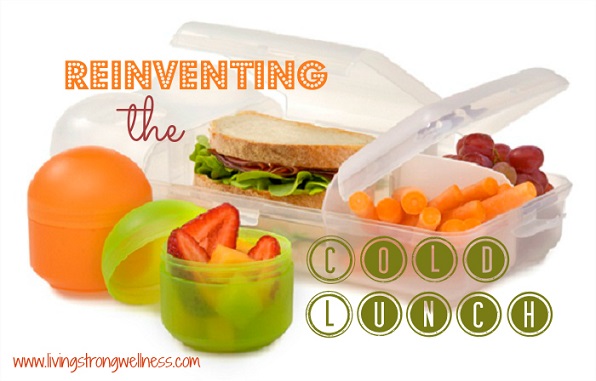
Written by Kari, Contributing Writer
With school starting soon and routines getting back in order, if your child attends school, packing a lunch is a part of that routine. I’m not sure about where you live, but the choices for ‘hot lunch’ are not acceptable at my daughter’s school, so everyday is a ‘cold lunch’ day. I understand the convenience of your child eating hot lunch at school, but the overall consequences are nothing short of disastrous.
And no, I’m not exaggerating.
Understanding where food comes from, how it’s made and what ingredients or chemicals are in the food, it’s not too hard of a decision to make your child’s lunch if you are proactive in your child’s health.
A year or so ago they even made a decision to make school food “healthier” by getting rid of all milk choices over skim and 1% milk. How is this healthier? I like to inform other parents, who are health conscious like me, that having your kids drinking this low-fat and fat-free milk does nothing but deprive them of necessary fats and spikes their insulin levels every time they drink it. Not a habit you want your body doing constantly.
And now that they are wanting to add aspartame to the flavored milk – that makes it even worse. I won’t even go into the fact that the milk comes from conventional cows that have been pumped full of antibiotics and hormones. But serving our kids this kind of milk isn’t helping the obesity issue nor the type 2 diabetes epidemic among our kids.
So…how as parents do we keep our children well-fed during school? How can we make it simple, yet not boring? How can our kids enjoy eating cold lunch while most kids around them are eating hot lunch?
Well, I’m in my 5th year of making my children lunches for school and I have a pretty good handle on what works for my kids on a day to day basis. Not all of my suggestions may work for you, your schedule or your child’s tastes, but it’s a good starting point and can spark ideas in you that you can successfully implement in your house to make sure your kids have a healthy lunch box too!
Some items I like to have on hand to make packing easier are:
- thermoses for hot meals
- various size Pyrex bowls with lids that little hands can take off easily, but are strong enough to not cause leaking
- reusable snack bags (I have cloth/canvas ones, but sometimes I still use regular old Ziploc bags)
- insulated lunch bag
- ice packs (I always stick these inside Ziploc bags in case they break or leak – and this has happened several times)
- reusable utensils and stainless steel water bottles
*If you don’t want to send your kids to school with glass (some ages this may not be realistic), then find plastic containers that are BPA-free.
A few rules about the contents:
1. Always have protein in the lunch.
This is good for stabilizing blood sugar levels and helps keep tummies feeling full longer. Good choices are cultured milk (like Kefir or Amasai), fish, beef, chicken, turkey, bison, raw cheese, eggs, raw leafy greens, beans, legumes.
2. Include healthy fats everyday.
Those healthy fats are so important for our kids. They assist with cell repair, hormone function, brain health and more. They will also keep your kids feeling full longer. Examples of healthy full-fat foods: avocados, full-fat plain yogurt, whole milk cottage cheese, whole milk, cheese, nuts, grass-fed butter, eggs, coconut oil, etc.
3. Good, energy giving carbs!
Those kids need energy so they aren’t falling asleep during their long days. Good carbs are fruits, beans, legumes, whole-grain grains (sprouted or soaked are best), blueberries, raspberries, chia seeds, flaxseed, almonds, honey, quinoa, etc.
4. Clean water.
Make sure they have good, clean water to drink while they’re at school. Most schools allow your child to have a water bottle at their desk – or at least access to their water bottles while they are in class. Having water as the beverage option is perfect in lunches, especially since lunch is either before or after recess – they’ll need to stay hydrated.
Here are a few ideas from my house:
Leftovers.
This is always the easiest and most convenient. I cook healthy dinners, so they gets healthy lunches.
Soups.
During the colder months, the crockpot is my friend. Sending warming and beneficial soups (like chicken noodle or vegetable soup) is a fun change for kids.
PBBH.
For those days when my kids just want a sandwich, they get a homemade spread of peanut butter, butter and raw honey on real sourdough bread, with some Enjoy Life! mini chocolate chips sprinkled on top. They love it!
Healthy ‘sides’.
Think summer sun pickles, slices of raw cheese, chips and homemade salsa, homemade banana bread, roasted chickpeas, etc.
Probiotics.
My children get full-fat yogurt at least 3 times a week in their lunch. I add some raw honey, a tad bit of grade B maple syrup and chia seeds. Not only is this filling, but gives their immune system a good boost and will give them satiety and lasting energy.
Outside the box.
Have you tried cheese quesadillas? These take about 5 minutes to make in a skillet with tortillas, cheese and coconut oil. Fold in half, slice and put in a thermos so they stay warm. Pasta with meat sauce is always a winner. Noodles and butter with parmesan cheese. Sliced hard boiled eggs, raw cheese and crispy sourdough bites. Burritos and enchiladas are quick and easy and filling! We also do French toast, pancakes and waffles quite often. If we make any on the weekend, we make a bunch extra and freeze them, pop them in the oven while the kids are getting ready, prepare with grass-fed butter, grade B maple syrup, cut up in pieces and put into a thermos. It’s always a hit. You can also try homemade crispy chicken nuggets (grain-free, dairy-free, egg-free is an option) with a side of ranch dip made with yogurt and seasoning.
The possibilities are endless, especially if you do leftovers a lot. Just make sure you have some extra when you prepare meals and you’ll have a variety of lunch options for your child. Figure out what your child will and will not eat. How much time do they have for lunch?
If you put too much food in, it will most likely all come back home. If you find certain items they just won’t touch – exchange it for something else. I realized over four years that school lunches are a battle I choose not to fight. I can concentrate on certain items at home for breakfast and dinner or snacks rather than fighting everyday when they’re not getting consumed at lunchtime.
Try to stay away from controversial foods. By this I mean if your child drinks Kombucha – have them drink it at home instead of at lunch. Yes it’s healthy. No it’s not harmful. But we shouldn’t be those parents trying to ‘make a statement’ with items that may be controversial in the sight of the school leaders. Kombucha does contain small traces of alcohol – so leave it at home and pack water, milk (or dairy alternative) or spa water for a flavored water alternative. My daughter thoroughly enjoys her Black Cherry Chia Raw Kombucha – but she never takes it to school. Most of those above lunch ideas can be found in my cookbook, Real Food. Real Kitchen. So Good!
If you find your child feels left out when her classmates are eating pizza and cheeseburgers – then maybe you can plan a couple meals during the month where the leftovers she takes will be what her classmates will have for hot lunch, like pizza, just healthier versions. I’ve done this for my daughter and she was really appreciative that I did that for her.
Packing your child’s lunch doesn’t have to be a burden for you, nor does eating it have to be boring for them! My daughter gets more comments on her lunches and all the kids wish their mommy and daddy would make their lunch like hers! That’s a sign that kids are open for something new and creative when it comes time for lunch at school.
How do you make your child’s cold lunch fun and healthy?
The post Reinventing the Cold Lunch appeared first on Day2Day Joys.
]]>The post Real Food on a Budget appeared first on Day2Day Joys.
]]>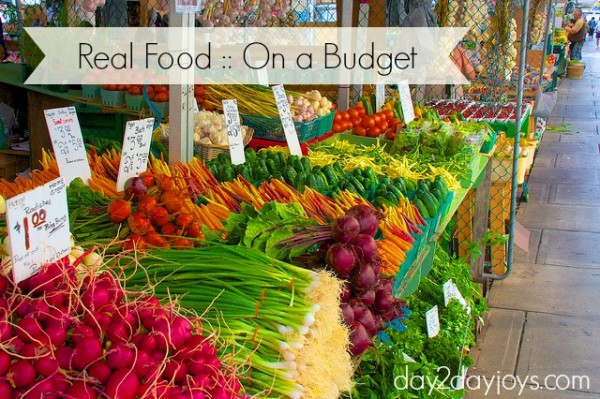
Written by Jenn @ A Simple Haven, Contributing Writer
Anyone else ringing in the New Year with some kind of detox? After consuming more sugar and white flour in the past several weeks than I have during the rest of the year, my body is crying out for fruits and veggies.
Even if you’re not doing anything drastic, maybe you just want make better food choices in 2014–avoid processed stuff, replace some conventionally-grown produce with organic, eat more locally-grown stuff (good luck in January, right?), or just be mindful of how certain foods make you feel.
However, if you’ve started down the road to eating mostly “real food,” you’ve probably noticed it’s easy spend waaay more than usual on groceries.
The reality is quality food costs more than junk. It’s a bummer, but it’s true. And, in many ways, it makes sense.
Is that to say you’ll have to dole out hundreds more to eat well? Not necessarily.
In my experience, it is possible to eat real food while sticking to a reasonable grocery budget. It just takes a little planning and strategy.
9 Tips for Eating Real Food on a Budget
1.) Meal plan. Just do it
Seriously, it’s the easiest way to mind your costs. Make a list of favorite meals, write down the ingredients needed, and stick to that list at the store.
Though I’ve never tried it, I’ve heard Plan to Eat is great. You enter your favorite recipes and it produces your grocery lists. Sounds simple and there’s a free 30-day trial.
2.) Be strategic
As you plan, be mindful of spreading out more expensive items over multiple meals. For example, roast a whole chicken on Monday, then use it later that week (or month, if you freeze it) for chicken pot pie, chicken enchiladas, chicken soup, etc.
3.) While we’re talking chicken, buy whole chickens
It’s so much less expensive per pound than breasts and even if you’re not a dark meat fan, in soups, casseroles, and the like, you probably won’t notice it’s not white.
Not a meat eater? Great! Beans are cheap! 
Seriously, though, a few hearty vegetarian meals in the rotation will help the budget loads.
4.) Buy in bulk
Whether it’s from a co-op, Costco, or the bulk isle at your local grocery, bulk almost always equals better prices. Some co-ops I’m a fan of are Azure Standard and Frontier–and, if you’re in the Midwest, Country Life Natural Foods.
Buying a whole or portion of a cow is also super cost-effective. Check out this site for options near you.
5.) Start a co-op
No Azure Standard drop-offs in your town? You can start one if you can get enough families ordering.
No room for 25 pounds of almond flour? Find some friends or neighbors to split.
No raw cheddar cheese available locally? You can found a cheese club that buys in bulk from an Amish farm in Pennsylvania. Not that I’m in a cheese club or anything…
6.) Price it out
As in, figure out the price per ounce. Tedious, perhaps, but the only way to know if you’re getting the best deal.
If, like me, you’re not math-minded, it can be hard to tell if that gigantic box of whatever at Costco really is cheaper than a single item at your grocery store. And while co-ops generally offer great prices, they don’t always offer the best price.
Plus, if you price it out and make an awesome spreadsheet of your findings, you’ll end up unintentionally memorizing fun facts like coconut oil is 29 cents per ounce at Costco.
7.) Start a garden
Unhelpful in January, but awesome come July. There is nothing like heading to the backyard and coming back with a gigantic dinner salad.
8.) Learn from others
Real foodie folks in your neck of the woods (who are budget-conscious) will often know of local deals or might be willing to split bulk items with you. I’ve also found nutritionally like-minded friends and blogs super helpful in sourcing real-food recipes and budget tips.
Other favorite resources are Plan it, Don’t Panic and Real Food on a Real Budget.
9.) Give yourself a break, prioritize, and be realistic
If you’re on a budget, you simply can’t do it all. So relax, decide what’s most important, and don’t worry about the rest.
Maybe you can cut back in other areas to increase your food spending a little. Maybe you don’t eat every single thing local or organic.
Maybe you prioritize quality meats and dairy and do what you can with produce.
What are your best tips for eating real food on a budget? I’d love to hear.
Especially since I’m apparently only eating quality meat and produce in January. 
The post Real Food on a Budget appeared first on Day2Day Joys.
]]>The post What’s So Great About a Household Notebook appeared first on Day2Day Joys.
]]>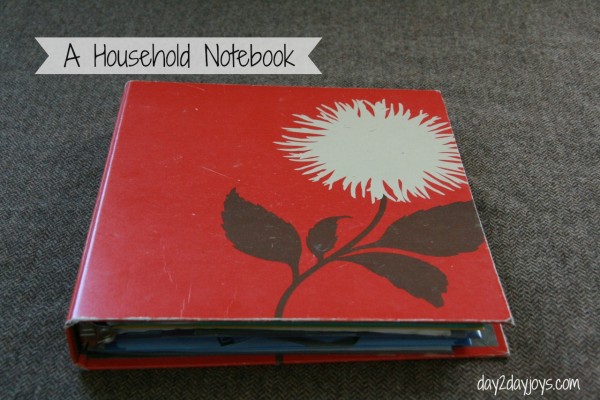
Written by Jenn, Contributing Writer
Several months ago, I came across a few blog posts and videos explaining how to set up a household notebook. While hardly revolutionary, I had never heard of such a thing. Thank you, interwebs.
Since then, I have adopted my own version and don’t know how I’d function without it. Nearly every piece of paper I regularly need or receive can be contained in my cute little binder from Target.
It helps me live more intentionally, be more organized, and collect less clutter.
I also like that:
- Important receipts don’t get lost.
- Meal plans and ideas are easily found.
- Grocery lists and related food documents (co-op info, etc.) are all in one place.
- I stay on budget better.
- I’m more focused and intentional in my house projects.
- Random kids’ papers have a home.
- My random papers have a home.
It did take some time to set up, but the initial investment was totally worth it. I refer to it daily, even if it’s just to see what’s for dinner or to drop in a receipt.
Occasionally, I’ll clean out anything that’s dated or needs to be stored elsewhere (kids’ coloring pages pile up after a while). But generally, my notebook is not something that adds to my workload; rather, it makes my life way easier.
Everyone will likely have different preferences about categories and format. Here’s what has worked for me so far:
My Household Notebook
Materials:
- 1 Three-ring binder (mine is from Target), cute factor preferred
- Avery Pocket Tab Dividers (These are my absolute favorite).
- Several plastic sheet protectors for important documents
Categories:
Home :: This section contains spring cleaning lists, house project ideas, Christmas and birthday ideas, pet information, and any documents or loose items related to current house projects (swatches, etc.).
I use this section the most on Sunday evenings when I check the house project list to see what I might work on during the week. I’m usually in the midst of at least a couple of projects and the master list helps me prioritize.
Budget :: This holds my monthly budget spreadsheet (see above), where I attempt to document what I’ve spend each week for groceries and miscellaneous items. We use a cash envelope system for one area of our budget (where we have the least self-control) but use a credit card for the rest.
Basically, I keep my receipts in the pocket of the tab divider and, about once a week, enter the amounts I’ve spent in the different categories on the printed spreadsheet. Having this information readily available helps keep me on budget.
Yes, using cash for everything would save me this step. But we don’t keep a balance on our credit cards and cash doesn’t earn you airline miles  .
.
I also make a short list of anticipated expenses for the month—irregular things like family pics, garden supplies, an upcoming road trip, etc. I don’t (and couldn’t) account for everything ahead of time, but the list helps me prioritize and be more intentional in my spending.
Meals :: This section holds my monthly meal calendar. I only plan for dinners, about two weeks at a time. I refer to my List Plan It seasonal lists of meals when I’m meal planning—I got mine with Stephanie Langford’s Plan it Don’t Panic eBook (highly recommend) but you could also get them here.
Grocery :: This holds any document related to food or food co-ops I’m in—my crazy cost-comparing spreadsheets, Dirty Dozen list, grocery checklist (another List Plan It favorite), etc.
Kids :: This contains the babysitting info sheet for sitters, kids’ favorite works of art, letters from Grammie, medical papers, and any other kid-related bits.
Personal :: I admit, I labeled this section “Wifey.” That’s me.
This is dedicated to anything of personal interest that is unrelated to blogging or home decor (I have other binders for those).
Right now, it holds batik bookmarks from our friends in Malaysia, a pamphlet on a local nature preserve, Simple Mom’s reflection questions for New Year’s Eve, a muscle testing info sheet, and some favorite articles on parenting and prayer. And this fantastic list from Ann Voskamp.
In case you were interested.
So, there it is. Again, nothing revolutionary, but a great help to me in this season of life.
Do you use a household notebook? If so, how does it work?
The post What’s So Great About a Household Notebook appeared first on Day2Day Joys.
]]>The post Organized Meal Planning Made Simple appeared first on Day2Day Joys.
]]>
Written by Kari, Contributing Writer
Meal planning has never been one of my favorite activities. I remember when I got married almost 13 years ago the dread I faced every time I went to the grocery store. I never had a plan, I never knew what to get and I had no creativity. My husband was a trooper, because I sure didn’t woo him with my amazing skills in the kitchen. As time went on, I moved from the same ole repeated 5 meals to a broader menu, but I still despised the duty of planning meals and grocery shopping. My solution? Continue to skip the planning and complain every time I went shopping. Wrong solution.
Over the years I have developed a whole new perspective on this task and I have found that I can do it joyfully.
First and foremost, in the Bible, we are told to:
“Whatever you do, work at it with all your heart, as working for the Lord, not for human masters,”~Colossians 3:23, NIV
This would include feeding and taking care of my family. After all, if I grumble and complain about this task, it won’t be much of a blessing to my husband or kids. They will see that taking care of them is a burden for me and it won’t be enjoyable. Also, what example is that for my kids? Not a good one, that’s for sure.
Back in 2008 I began the process of becoming a Certified Health and Nutrition Consultant, which has been a huge part in changing my perspective in this area. A couple certifications I hold are for Fitness Nutrition and as a Personal Fitness Chef. You bet I look at meal planning and feeding my family differently. It’s no longer a dreaded task nor a burden to me. It’s an honor to be able to take such good care of my family as I sow time into their lives by preparing healthy and nutritious meals.
I’ll have to be honest though – at first, I still struggled with grocery shopping, planning and preparation. I always forgot to take something out of the freezer or I forgot the ingredients to make a side dish and I would find myself getting frustrated and resorting to convenience rather than nutritious. It occurred to me one day that I absolutely had to implement something I had operating in every other area of my life except meal time: ORGANIZATION and a PLAN!
That’s just what I did and in the matter of a week or two, I had a simple, yet extremely effective meal planning binder and system set up that worked for ME. This ONE change has saved me time, money and sanity over the past three years.
It’s not complicated, nor is it unrealistic. It keeps my most frequently used recipes in one place, I have my preparation details for the week right in front of me and I’m able to keep all my menu plans stored here so I can go back and get ideas when I’m feeling uncreative. How to make this SIMPLE and EFFECTIVE meal planning binder:
How to make this SIMPLE and EFFECTIVE meal planning binder:
-
– I took a 1” binder (can be larger if you want) and put dividers in it.
-
– I named each section for what was most pertinent for me and my family (Menu, Main Dish, Sides/Appetizers, Dessert, Drinks)
-
– I made up a weekly menu plan and weekly preparation form to be my go-to on a daily basis.
-
– I have a month calendar so I can put all the dinners on it and I can see a broader view of what the month’s meals look like.
How to use this binder and allow it to make meal planning PRODUCTIVE.
-
– Every week I take some time to plan my meals for the following week.
-
– I’ll fill out the menu sheet, then I’ll fill out my prep/details sheet so I know what I have to do on a daily basis (take beef out of freezer, soak pecans, make crème fraiche). This is a life-saver.
-
– Then I go through the menu and make my shopping list. This is where I saved so much money! Buying stuff I didn’t need, then having to go back and spend more money to buy what I did need.
-
– LOOK at this sheet everyday to make sure you don’t forget anything. If you need it “out” so you’ll remember to look at it, hang it on your fridge so it’s in front of your eyes all the time.
-
– Store your most used recipes in their sections. This way you’re not searching all over for the “last place you saw it”.
-
– Make notes on your meals and recipes. This way you’ll know how often you should or shouldn’t prepare it. Notes such as: “Excellent!” or “Hubby loved it, kids didn’t”. Also note any alterations you made to the recipe and whether it worked or not!
-
– Keep your menu plans so you can refer to them later.
It may take a couple weeks to get in the swing of things and remembering you have this wonderful tool, but once you get in the routine of this – your meal planning and shopping will be so much easier.
Now, to wrap this up I’ll share with you one of my go-to autumn recipes that has it’s place in my binder. It is my quick and easy Cinnamon Roll Smash. This is a great, healthy alternative to those store bought cinnamon rolls or ones made with pre-made pastry dough.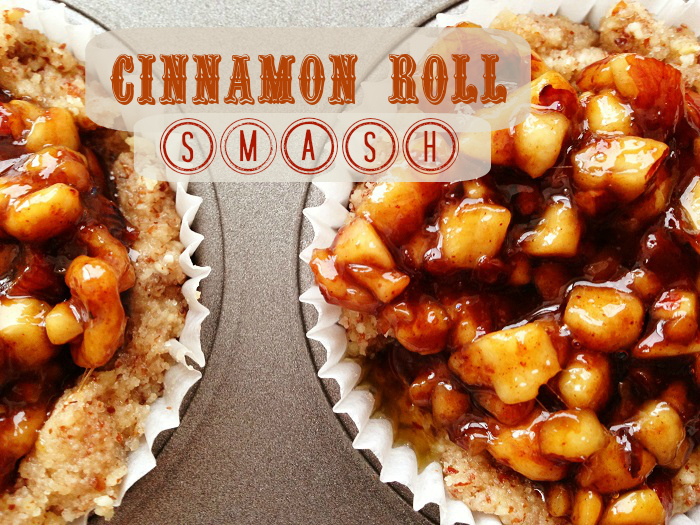
Cinnamon Roll Smash:
What You Need:
Almond Flour Crust
– 2 cups almond flour
– 1/2 cup coconut sugar (you could also use organic cane sugar)
– 2 tablespoons whole milk or heavy cream (use coconut cream for dairy-free option)
– 1 tablespoon real butter, melted (via stovetop is best, you could also use raw coconut oil)
– 1 tablespoon vanilla – make your own
– 2 teaspoon baking powder – aluminum free
– 1/4 teaspoon kosher sea saltFilling
– 1 cup toasted almonds, toasted pecans or toasted walnuts
– 1/2 cup real butter, melted (can use coconut oil)
– 1/2 cup coconut sugar
– 1/4 cup sucanat (or brown sugar)
– 2 tablespoons grade B maple syrup
– 1 tablespoon vanilla – make your own
– 2 teaspoons cinnamon
– 1/2 teaspoon kosher sea salt
– 1/8 teaspoon ground cloves (optional)
What to Do:
To get complete instructions on how to make these amazing treats, visit Cinnamon Roll Smash and make them as soon as possible! Your family will thank you for it! Now, enjoy the simplicity of meal planning which will make your routine easier, your wallet fuller and will leave you more time in the kitchen to make amazing snacks like these!
Enjoy! And don’t forget: Everyday make your life A LIFE WORTH LIVING!
*this post may be linked to: Encourage One Another, Titus 2sdays, and WFMW*
How do you simplify meal planning? Do you have a system?
The post Organized Meal Planning Made Simple appeared first on Day2Day Joys.
]]>The post Simplifying Meal Planning For the New School Year {and a Giveaway!} appeared first on Day2Day Joys.
]]>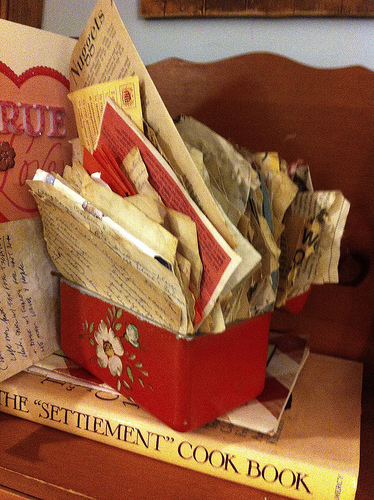
Written by Kim, Contributing Writer
If we’re honest with ourselves, SAD eating (eating the Standard American Diet of refined, processed, convenience foods) can be pretty easy and comfortable. Healthy eating, in contrast, can seem pretty overwhelming. Planning for three meals a day, from scratch, plus snacks, everyday! How’s a mom to manage it?!
I encourage people to break it down. First of all, most families (healthy eaters or not) tend to stick to a limited number of recipes that they use over and over. Family favorites seem to form the base of a menu with occasional special-occasion dishes and new recipes rounding it out. Many people settle into a routine with breakfast- perhaps 2-5 different breakfasts repeated over and over. Lunch also tends to translate into another 3-5 options.
Dinner, the main attraction, usually has a little more variation. But, surprising to most, the average family has just 7-12 different dinner menus that they cycle through repeatedly. So, if you consider that you just need to find 7-12 great wholesome dinners to settle into as your new healthy dinner standards, it just doesn’t seem quite as intimidating, does it?!
Create a recipe shelf or binder
One of the best tips I can share is to intentionally collect all your new wholesome recipe staple recipes into one location. “Back to School” season is a fun and motivating time to start something new like this (and it gives us another excuse to head to the store for more fun “back to school” supplies!).
Choose a special binder (for full page print-outs of recipes) or a photo album (where each spot is perfectly sized for recipe/index cards). The key is to intentionally put all the recipes you want to regularly include in your improved diet in this collection spot.
Let’s say you like a recipe a friend prepared. You can easily copy it down and slip it in a sleeve. Or maybe you’ve clipped a recipe from a magazine or printed one out from the internet, tried it and liked it- then just slip it into another slot. Or maybe you like a recipe that you prepared from a cookbook but you don’t want to take the time to copy the recipe onto a card.
Still be sure to add the recipe name, source and page number to an index card and slip it in or, better yet, photocopy the recipe and add it to your book. It’s all too easy to prepare a great dish, put the cookbook back up on the shelf and forget about it. This way, though, you’ve got a great reminder of another tasty dish you can prepare. This binder/album becomes a handy collection place for successful wholesome recipes.
You might find it beneficial to break the binder/album into sections- breakfast, lunch, salad, entrees, desserts, special occasion dishes, etc. This single collection spot allows you to keep all your new “healthy lifestyle” recipes at your fingertips and you’ll find it encouraging as your options for healthy meals grow in number before your eyes.
It is really important to write down all your successful recipes no matter how simple they may seem, because if you don’t have a written record of it, it will too likely become a lost memory. Even something as simple as “grind up flax seed as a smoothie topping” or “puree cored apples in blender with a little cinnamon to make raw applesauce” or simple directions for preparing a common dish like hot oatmeal.
A lot of times it is the simple dishes that we thoroughly enjoy, but if we don’t write them down, we often forget to repeat them. Even something as simple as “steamed sliced carrots make a great side dish” or a list of the components of a tasty snack mix would be lost if not written down. I guess, to sum it up, what I’m trying to say is, “WRITE IT DOWN!”
Since we all have different organization and operational styles, not one system works for all in terms of menu-planning. My ebook, Good and Easy Eats, comes with a few bonuses including step-by-step instructions for two different menu planning systems I’ve developed. You’ll probably be able to quickly determine for yourself which system would be a good match for you and your family. Both systems only require a stack of sticky notes or index cards to develop.
One involves developing a regular repeatable monthly menu. The benefits of this plan is that it doesn’t require any weekly planning- you just keep with the plan. The downside is that it can be less flexible and adaptable.
The other system involves using set dinner themes. After you develop recipe categories for each evening of the week you choose meals from each category that fit with items on hand or purchased. For this reason, it is a very flexible and adaptable plan, but on the downside it does require a small amount of weekly planning.
I hope you might take advantage of the special I’m offering on my Good and Easy Eats ebook (a collection of over 70 simple, family-pleasing wholesome recipes) and get the menu planning system bonus in addition to a free wholesome eating podcast and smoothie tutorial video. All for just $3.99!
And now… a GIVEAWAY!
Enter this giveaway! If you win, you will get Good and Easy eats an ebook (note: an ebook, not a printed book). There will be 3 Winners!
Just use form below:
What’s your favorite food to make homemade?
The post Simplifying Meal Planning For the New School Year {and a Giveaway!} appeared first on Day2Day Joys.
]]>





